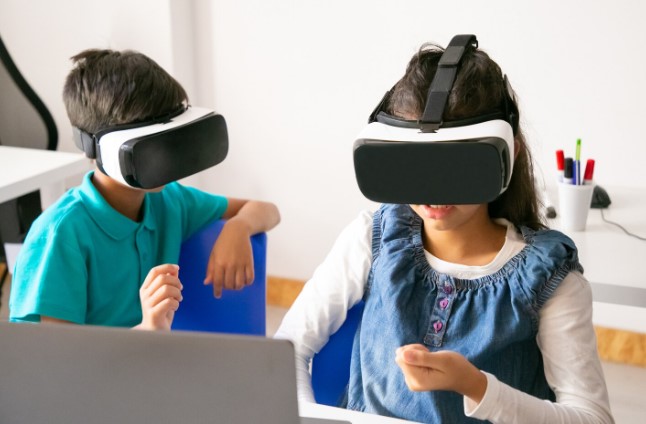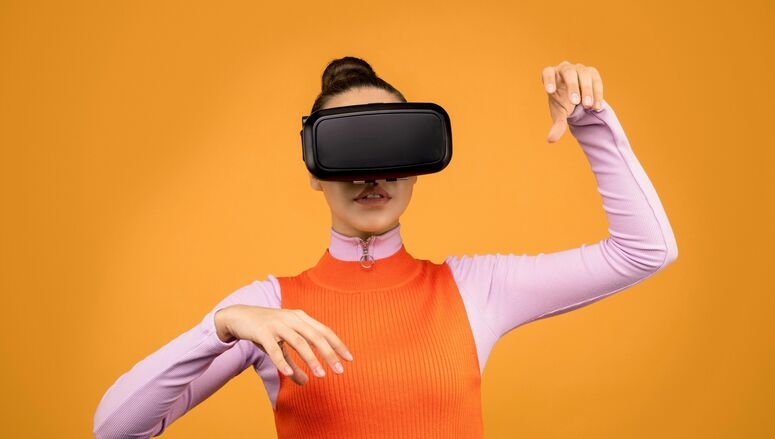The introduction of digital technology has led to innovative methods of educating and training people, and one of them is gamified learning, which is rapidly and widely accepted in the US. It has already conquered K-12 education, and now it is also gaining traction in corporate training, where the fun aspect, along with the interactivity, is doing the job of engaging the learners, increasing their memory capacity, and, through that, making the whole process more effective.
This guide covers what gamified learning is, why it’s growing in the USA, and how educators and trainers can use it to boost outcomes across all learning sectors. Whether you teach, train, or learn, understanding its benefits and real-world uses will help you stay ahead in today’s competitive education landscape.
Gamified Learning: A Definition
Gamified learning turns lessons into dynamic experiences by adding elements like points, badges, challenges, and leaderboards—appealing to our instinct for achievement, recognition, and healthy competition.
Unlike traditional passive education, gamified learning actively involves students and employees, making learning feel less like a chore and more like fun. This shift boosts engagement significantly. Plus, instant feedback, rewards, and clear progression keep motivation soaring throughout the process.
Reasons Behind the Rise of Gamified Learning in the US
Educators and organizations across the United States have adopted gamified learning in various areas for the following reasons:
Increased Engagement and Motivation
The most significant problem faced in education and training is maintaining the interest of learners. Gamified learning, however, resorts to this challenge by making the lessons interactive. Research consistently backs this up, that gamification leads to greater student engagement to the extent that the latter factor can be seen as a direct cause of improved knowledge retention.
In U.S. schools, teachers see more engagement with gamified lessons. Likewise, companies report faster, higher-quality training when using gamification.
Caters to Different Learning Styles
Gamified learning is very much in line with the philosophy of personalized learning that the American education system operates on. The slowest learners can progress at their own pace, the fastest ones can just get instant feedback, and everyone can tackle the challenges that are appropriate for their skill level.
Gamified systems can thus adapt to any learner’s preference for competitive, collaborative, or solitary learning. Hence, this technique makes education effective for a larger number of students than before.
Is in Step with the Technology Trend
The US is a pioneer in the adoption and development of technology, and the education sector is not left behind. Gamified learning often incorporates high-tech approaches such as mobile applications, virtual reality (VR), and artificial intelligence (AI) to set up the most user-friendly and versatile learning environments.
With the help of such technologies, the education system can cater to the demand for flexibility and remote learning, which is crucial in a country with a large area and diverse cultures like the USA.
Suitability for All Ages and Locations
Many people mistakenly believe that gamified learning is only for the younger generation. However, major U.S. firms frequently use gamification for onboarding, compliance training, and professional development. By keeping training engaging, these companies reduce attrition and strengthen their workforce’s skills.

How Can You Introduce Gamified Learning in Your School or Company?
If the idea of gamified learning in your school or company appeals to you, the following tips will be effective in getting you started:
Step 1: Set Learning Objectives that Are Clear
Before gamifying your content, clearly state the learning outcomes you want to achieve. In other words, do you want the students to earn better scores, attend more classes, or develop their soft skills? Having explicit objectives in mind will help you decide on the right game elements to add to your content.
Step 2: Select the Right Game Mechanics
Not all learners are motivated by the same stimulants. For example, some students like competition while others prefer to collaborate or learn through mastery. So think about:
- Giving them points or badges as achievement illustrations
- Using ranking lists to promote friendly competition
- Adding different levels and challenges to keep the learners moving forward
- Creating quests or missions to give some context and to make the learning more engaging
You should be very careful to customize the game mechanics that suit both the educational goals and the preferences of your audience.
Step 3: Give Prompt Feedback
The characteristic of gamified learning that gives instant feedback is one of its main advantages and has a significant impact on learners. For the students, it means that they can make the necessary corrections, and it also means that they will not lose their motivation. Incorporate quizzes, interactive activities, and progress indicators to provide learners with real-time information about their performance.
Step 4: Use Storytelling
Narratives are the most powerful and effective ways to imprint learning into memory. Hence, present your classes in a story that learners can either relate to or get enthusiastic about. For instance, a history lesson could evolve into a time-travel adventure, or sales training could imitate real-world client-pain scenarios.
Step 5: Blend Online and Offline Learning
Hybrid learning is becoming a common practice not only among the trendiest U. S. schools but also among the biggest companies. They will take the digital gamified content and couple it with face-to-face interaction activities, such as group discussions, workshops, or competitions. This will increase the feeling of being a part of the community and thus the likelihood of understanding.
Step 6: Make Accessibility and Inclusivity a Priority
In the USA, it is essential to create learning experiences that are accessible for all types of learners. Therefore, it would be necessary that there are a variety of options available, such as audio narration, different text sizes, and low-bandwidth versions, to cater to the different needs and environments.
Step 7: Assess and Improve
You can track important metrics such as completion rates, student engagement levels, and feedback from students. After that, this information can be used to improve your gamified learning experience over time.
Case Studies on Gamified Learning in the USA
The following are some of the educational and business sectors in the United States where gamified learning has been a successful method:
- Schools and universities
With platforms like Kahoot! and Quizizz, experiences of classroom quizzes as lively competitions are transformed. Besides that, many universities are providing virtual skill mastery and badges as incentives for students, especially in the fields of nursing, engineering, and business.
- Corporate Training
Companies such as Deloitte and Microsoft use gamified modules to train employees on compliance, safety protocols, and sales techniques. The programs not only result in higher completion rates but also create a positive impact on employee satisfaction.
- Lifelong Learning Platforms
Applications like Duolingo have implemented gamification to make language learning easy and fun for millions of Americans. These platforms show the massive potential gamified learning can have in supporting self-education at any age.
Obstacles and Things to Keep in Mind
Despite the good sides of gamified learning, there are still some difficulties:
- Do not underestimate the importance of education: Students might pay more attention to points or badges instead of understanding the content. So, it is necessary to mix up the fun with the development of the core learning objectives.
- Access to Technology: Not all learners in the USA have access to the same devices and the same speed of the internet. Thus, it is a good idea to consider these limitations as you plan your solutions.
- The readiness of the instructor: Teachers and trainers must be equipped with the right amount of support and training to execute gamified learning competently.
- The Necessity of Quality: Gamification should not be a substitute but an enhancement of good instructional design.
US Gamified Learning Trends to Expect
The more progressive the technology is, the more the class of gamified learning training would be expanded in the US. Projected are:
- The usage of AI is becoming more common, leading to even more precise personalization of the learners’ paths.
- Growth of VR and AR technologies to create super-realistic experiences.
- More mobile-first, bite-sized learning designed to fit busy timelines.
- Integration of SEL into gamified formats.
Thus, for educators and trainers in the USA, being well-informed and flexible will be the way to go when it comes to capitalizing on these technological advancements.
Final Thoughts
Gamified learning is a game-changer for education and training in the United States. It eliminates many of the traditional education system challenges by making learning interactive, personalized, and fun.
The teachers who decide to take this route will not only be able to engage learners, improve outcomes, but also prepare them and themselves for the future.
Don’t rush it; start small, get feedback, and continuously improve your approach. Gamified learning, when backed by the right tools and mindset, can be your educational success driver.
